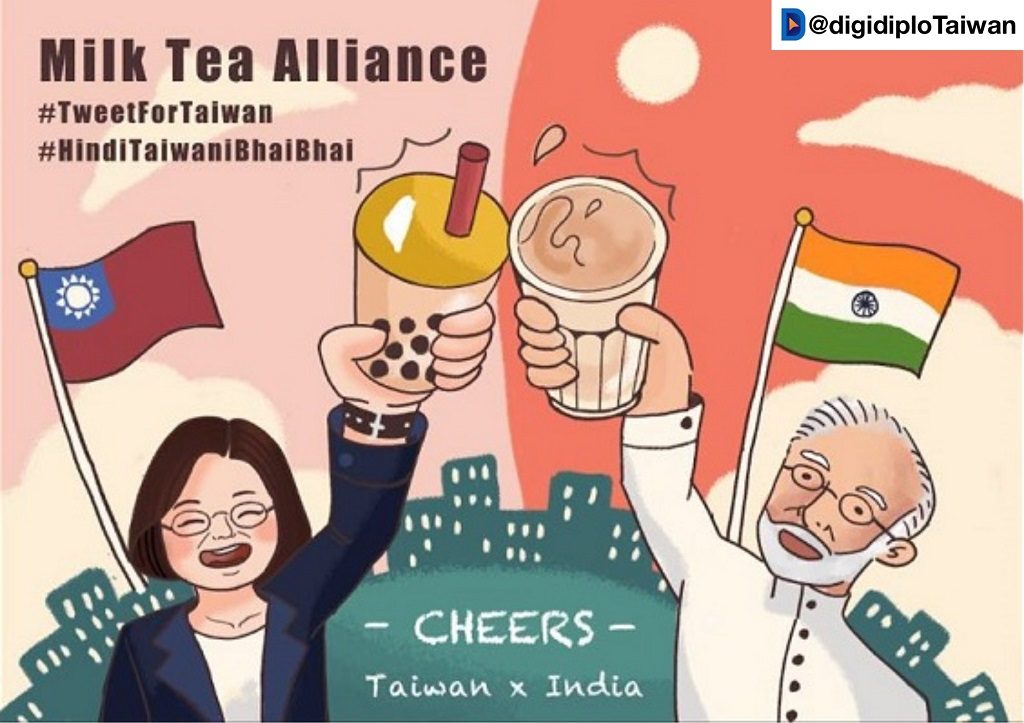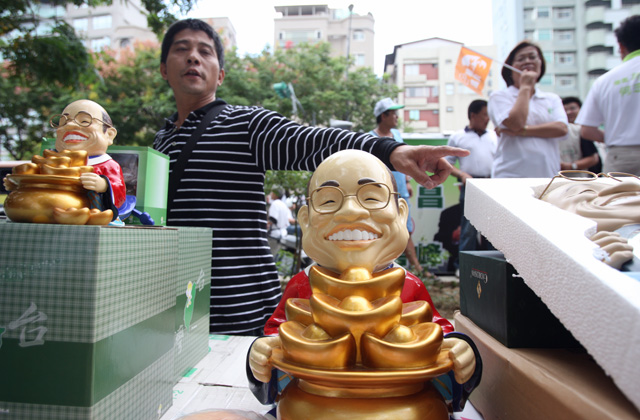What is Taiwanese identity?

By Hsin-I Sydney Yueh | 26 October 2020
No country conducts surveys on its people’s identity as frequently as Taiwan. Since 1992, the Election Study Center at National Chengchi University in Taiwan has been recording changes in the Taiwanese/Chinese identity every year. The reports tell us how many people identify themselves as Taiwanese, Chinese, or both. In addition, similar surveys of Taiwanese identity have been conducted by many poll centers, especially during election years. Why has Taiwanese identity drawn so much attention?
The Taiwanese identity discussed in this essay is narrowly defined as national identity, meaning a historically and culturally constructed belongingness to one nation. The promotion of Taiwanese national identity often worries foreign observers, because this suggests the “rise of Taiwan nationalism,” leading to formal independence, and a potential disaster for cross-strait relations. In 2003, the Woodrow Wilson Center’s Asia Program hosted a forum to discuss the evolution of a Taiwanese national identity. Invited scholars were asked a question: Is the growth of a separate Taiwanese national identity inevitable in the years to come? The answer is a certain yes, if we reflect on what has happened during the past 17 years.
Since the first direct presidential election in 1996, every such election in Taiwan has witnessed identity politics between the Republic of China (ROC) and Taiwan. Although the name of the ROC has been rejected by the international community due to the One China policy, a great number of Taiwanese still regard the formal national name as part of their national identity. However, this ROC identity should not be mistakenly interpreted as an acceptance of the unification proposed by the People’s Republic of China (PRC). In fact, Taiwanese people’s hostility toward the PRC reached a new peak in 2020, as did the number of pro-Taiwan independence supporters. This is a sign that Taiwanese people have gradually alienated themselves from a Chinese national identity. Despite some admiration for a cultural China, Taiwanese people have formed a consensus that they are citizens of an independent country that has achieved autonomy and democracy in the past two decades.
Therefore, at this moment, we are probably witnessing a new stage of the Taiwanese national identity formation. It is true that the China factor still occupies a core position in the discussion of Taiwanese national identity, but I would like to offer some observations regarding cultural manifestations, in order to interpret the meanings of a Taiwanese national identity. Through everyday communication, such as how people talk, how people act, and how people interact, communication scholars can infer the norms, values, worldviews, and people’s identity in the studied locations. The following three aspects are examples of how an imagined community has been formed in Taiwan.
First, Taiwanese national identity is established through linguistic inclusiveness. In 2018, the Congress passed a bill that legally defines all of the languages used in Taiwan as national languages. This bill shows the government’s efforts to promote linguistic diversity and eliminate language-based discrimination. Although such linguistic justice arrived late, the teaching and promotion of mother tongues are now encouraged without restrictions. A recent achievement can be found in the 2020 Golden Melody Award, a reputed music award in Taiwan: The music album “Kinakaian” (mother tongue), created by the indigenous musician Aljenljeng Tjaluvie in Paiwan, won the Best Album Award among 21 albums across different language categories.
The aim of the mother tongue revival does not mean replacing the dominant Taiwan Mandarin with Taiwan Hokkien (or Taiwanese) as the only linguistic symbol of Taiwanese identity. Getting on a Metro train in Taipei, the capital of Taiwan, passengers will hear the station names broadcast in four different languages, namely Taiwan Mandarin, Taiwan Hokkien, Hakka, and English. This is an attempt to promote ethnic and linguistic diversity. In addition to respecting the minority languages, studies show that the dominant language used in Taiwan has experienced the process of localization, too: Taiwan Mandarin, the transcription system zhuyin fuhao, and the neologisms created by Taiwan netizens, all exhibit salient elements of “Taiwanization.”

Second, Taiwanese national identity is shaped by a rich and innovative food culture. For instance, bubble tea is consumed as a nostalgic symbol by many overseas Taiwanese students in California, USA. This Taiwanese invention, also named boba tea and milk tea, has unexpectedly become an identity symbol for many Asian Americans. Moreover, similar tea cultures facilitate international friendships and recognition. The Milk Tea Alliance was formed in April 2020 when Thai netizens and Chinese netizens triggered an Internet war over a famous Thai actor. Netizens from Taiwan and Hong Kong supported Thais, not only because they were all milk tea consumers, but also because they had developed a shared anti-Beijing political view. Later in 2020, Indian netizens joined the alliance because of their border dispute with China.
In contrast to the international alliance-building through food, Taiwanese people strengthen their solidarity with a Taiwanese identity through polarization on food. In recent years, Taiwan’s netizens have developed parodic discourses about food, and deliberately caused heated debates. They argue over which night market sells the best fried chicken steak; which way is most authentic to make a zongzi, youfan, or bawan; which city has the poorest cuisine culture; or which city has the sweetest drinks. Taiwan’s netizens from the North to the South enthusiastically participate in the domestic Internet wars. The mentioning of all the small shops and local food stands accumulates a collective cultural map, which is a fast way to establish a Taiwanese national identity.
Third, Taiwan’s unique election culture facilitates the formation of a Taiwanese national identity. I have touched on this issue in my previous study, in which I argued that the Taiwan Mandarin term “sajiao,” the tactics of the weak, is one of the keywords for understanding Taiwanese culture. While I conducted fieldwork in Taiwan, observing how people persuaded others using this childish and feminine method, I found that politicians in Taiwan also tend to use this tactic and cute materials in their political campaigning.
Taiwanese politicians tend to exaggerate when expressing their emotions in public. For example, unlike a solemn apology, which is often seen as the norm in press conferences in the United States, a public apology in Taiwan might involve tears, kneeling down, wailing, and other affective performances. This emphasis on one’s helplessness, vulnerability, and powerlessness in such public performances is somehow expected or even encouraged by the viewers. For many Taiwanese, showing one’s soft side is a way to shorten the distance and arouse others’ empathy and compassion.

On the other hand, cute elements have been installed as part of political campaigning since the 1998 Taipei mayoral election. This trend of cuteness can be found in the 2020 presidential election as well. All of the first-round candidates launched cartoon personified stickers for social media. They also designed cute and humorous campaigning commodities that aimed to affectively appeal to young voters. The constant use of cute commodities in the campaigns increases the candidates’ image of approachability. Through the consumption of the commodities, political participation has become a fun game and an easy everyday practice for Taiwanese voters. This under-explored field in Taiwan’s politics and democracy reveals a unique mode of political participation that facilitates the formation of Taiwanese identity.
In summary, despite Taiwan watchers’ concerns, a separate Taiwanese national identity has inevitably been formed. This shared identity among Taiwanese who believe in their belonging to the same nation, no matter what name it has at present, is built through the communication process in many aspects of everyday life. Languages, food, and political participation are merely three of the featured cultural activities in this regard.

Dr Hsin-I Sydney Yueh is an Associate Professor of Communication Studies at Northeastern State University. Her book Identity Politics and Popular Culture in Taiwan: A Sajiao Generation (Lexington Books, 2016) received the Outstanding Book Award for the International and Intercultural Communication Division at the 2018 National Communication Association convention.
The views expressed on this blog are those of the author(s) and are not necessarily those of the SOAS China Institute.
SHARE THIS POST
